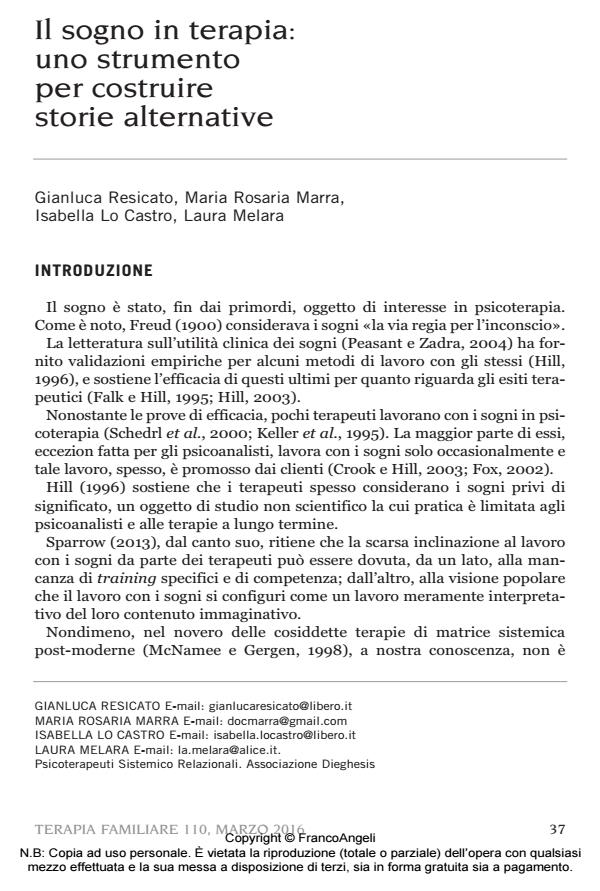Il sogno in terapia: uno strumento per costruire storie alternative
Journal title TERAPIA FAMILIARE
Author/s Gianluca Resicato, Maria Rosaria Marra, Isabella Lo Castro, Laura Melara
Publishing Year 2016 Issue 2016/110
Language Italian Pages 19 P. 37-55 File size 553 KB
DOI 10.3280/TF2016-110004
DOI is like a bar code for intellectual property: to have more infomation
click here
Below, you can see the article first page
If you want to buy this article in PDF format, you can do it, following the instructions to buy download credits

FrancoAngeli is member of Publishers International Linking Association, Inc (PILA), a not-for-profit association which run the CrossRef service enabling links to and from online scholarly content.
According to the authors’ methodological approach, the dream is one of the possible stories the subject can tell in therapy and consequently it generates meanings and can be modified as well. The authors propose to consider the dream as a movie story where the client will play the roles of director and screenwriter, as the therapist will be the co-writer. Rewriting the story that the dream is telling is the main aim of the therapeutical couple. Since the dream plot is always linked with dominant stories of waking life, making a change to dream stories is expected to ease the transformation of waking life dominant stories of the clients. In accordance with this methodological framework, some techniques of intervention will be described and several clinical examples will be given. The interventions are divided into explorative and constructive interventions. The implications of this methodological approach for the therapy are also discussed.
Keywords: Dream, narrative, psychotherapy, postmodern approaches, cocreation, collaborative approach.
Gianluca Resicato, Maria Rosaria Marra, Isabella Lo Castro, Laura Melara, Il sogno in terapia: uno strumento per costruire storie alternative in "TERAPIA FAMILIARE" 110/2016, pp 37-55, DOI: 10.3280/TF2016-110004